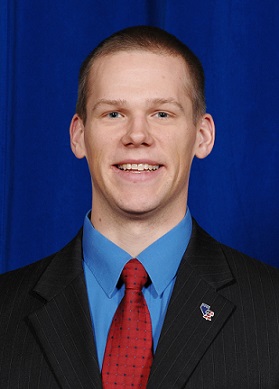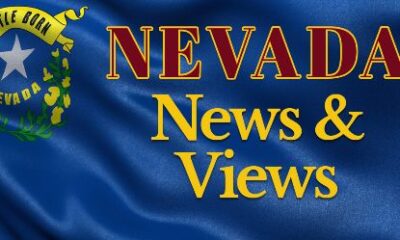Nothing is more effective in identifying which lawmakers will honor their word on taxes
 (Victor Joecks, NPRI) – In their book Switch: How to change things when change is hard, brothers Chip and Dan Heath identify three factors that influence how individuals make decisions — willpower, emotions, and situation.
(Victor Joecks, NPRI) – In their book Switch: How to change things when change is hard, brothers Chip and Dan Heath identify three factors that influence how individuals make decisions — willpower, emotions, and situation.
The Heaths use the analogy of a man riding on an elephant throughout their book. The Rider is a person’s logical side. The Elephant is a person’s emotions. The Heaths find that our decision-making power can trump our emotions in short instances, but that self-supervision is an expendable resource. That’s where the situation — or “path” — comes in.
The Heaths write:
Now you can see why the third element of our framework, the Path, is so critical. If you want people to change, you can provide clear direction (Rider) or boost their motivation and determination (Elephant). Alternatively, you can simply make the journey easier. Create a steep downhill slope and give them a push. Remove some friction from the trail. Scatter around lots of signs to tell them they’re getting close.
In short, you can shape the Path.
That’s exactly what politicians do when they sign the Taxpayer Protection Pledge — they shape the path.
The Taxpayer Protection Pledge, a promise from a candidate to voters that he or she will not raise taxes, shouldn’t be necessary. But as Americans for Tax Reform, which promotes and monitors the pledge, notes: Many politicians promise voters they won’t raise taxes on the campaign trail, but after they’re elected, go back on their word.
The Taxpayer Protection Pledge is a way for candidates to put their campaign rhetoric in writing. A written pledge carries more weight than words alone.
And the pledge is remarkably successful in predicting which lawmakers will and won’t support tax increases. During the 2014 campaign, all Nevada Republicans candidates pledged their support for lower taxes. Even Gov. Brian Sandoval and Sen. Majority Leader Michael Roberson, who would work tirelessly to pass the largest tax increase in Nevada history once elected, told voters they supported lower taxes.
Clearly, the rhetoric of politicians isn’t trustworthy. But a candidate’s willingness or unwillingness to sign the Taxpayer Protection Pledge is an excellent indicator of how they’ll vote on taxes.
For instance, in the Assembly, ten Republicans had signed the Taxpayer Protection Pledge. Nine voted against the largest tax increase in state history. Fifteen Assembly Republicans didn’t sign the Taxpayer Protection Pledge. Twelve voted for the largest tax hike in state history.
So, 90 percent of pledge signers opposed the tax hike, while 80 percent of non-pledge signers supported it. That’s a very good bellwether, considering the rhetoric on taxes from all 25 when they were candidates was virtually indistinguishable.
The reason the Taxpayer Protection Pledge is so effective is that it coordinates the three elements of decision making identified in Switch.
For the Rider, it provides clear and concise direction — “Don’t vote for tax increases.” For the Elephant, it boosts motivation and determination — “I made a promise, and I better stick to it.”
It also “shapes the path” — pledge-signing lawmakers face less pressure to vote for tax increases.
The biggest misunderstanding about Carson City is thinking that lawmakers function like a high-minded debate society and proposals move forward primarily on their merits. Certainly, ideas and information matter, but after committee hearings, lobbyists meet with lawmakers privately and tell them why they really should vote in a certain way. Political pressure is really what gets legislation moving or killed.
Even lobbyists, however, only have a limited amount of time. So what do they do? They’ll approach a lawmaker who’s signed the Taxpayer Protection Pledge and ask if there’s any way to convince them to vote for tax hikes. After they hear “no” or a hearty laugh a couple of times, the lobbyist will leave that lawmaker alone and turn their attention to politicians unwilling to make their opposition to tax increases public.
So lobbyists and special interest groups will meet with those handful of indecisive lawmakers — day after day, week after week. These meetings begin to alter some politicians’ perceptions of reality: “Everyone I’m talking with tells me that this tax increase isn’t so bad. If the people oppose tax increases, where are they?”
Of course, the average voter is trying to earn a living, because they aren’t depending on government plunder like the special-interest groups roaming Carson City. But that’s easy to forget in the Carson City bubble.
On top of that, the meetings become emotionally draining. Imagine having to tell powerful politicians — like the governor — and special-interest lobbyists, some of whom are personal friends or donors, “no” again and again for months. Their internal “Rider” gets exhausted, and it becomes easier and easier to justify tax increases. Eventually most fold.
It’s like going on a diet, but finding out that your hotel will bring a new dessert to your room ever 20 minutes. If you don’t call the front desk and tell them to stop, you’re almost certain to break your diet.
It’s not necessarily that Pledge signers are more courageous when it comes to fighting the political pressure to raise taxes, but that they proactively put themselves in a position where less courage is required.
So when conservative candidates say they don’t need to sign the Taxpayer Protection Pledge to vote against tax increases in Carson City, they are technically correct. But they’re also putting themselves in a situation where there will be a whole lot more pressure on them to vote for tax increases than if they signed.
It’s why in the Lord’s Prayer, Christ taught his disciplines to pray, “Lead us not into temptation” — not “Help us not to sin.” He was shaping the path.
The Taxpayer Protection Pledge does the same.
Victor Joecks is executive vice president of the Nevada Policy Research Institute, a non-profit, non-partisan think tank that produces and shares ideas and information that empowers people. For more information, please visit www.NPRI.org.
The column was originally published on NPRI’s website.




Facebook
Twitter
Pinterest
RSS